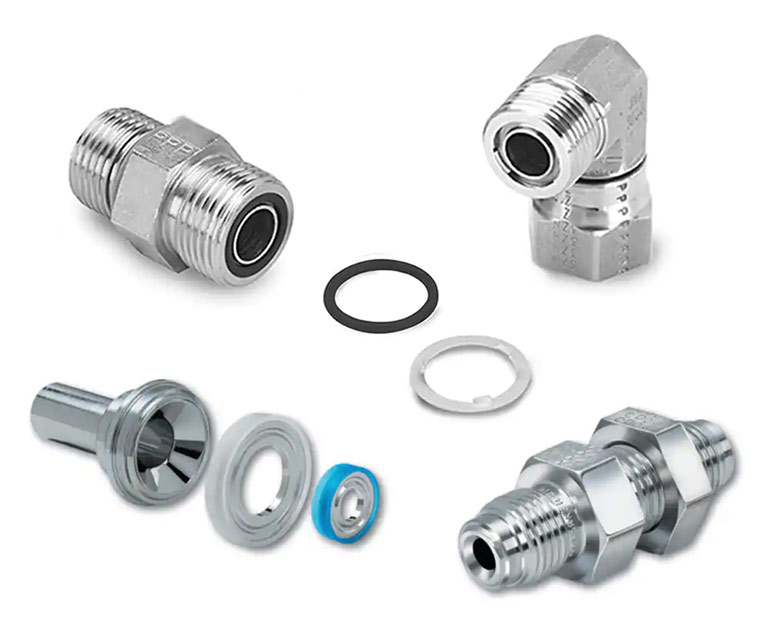By Josh Cosford, Contributing Editor
Some objects are universal by their very nature, mattering not where you reside or if you’re part of a colonial legacy. No matter where you travel, a wheel is a wheel because it’s so absolutely perfect for the job that it leaves any other method of moving heavy objects obsolete. Unfortunately, the hydraulic fitting & adapter market has no “wheel standard” yet. Not a single thread form and standard has so clearly fit the role that the wheel has risen above all others.

The fitting differences are more than just metric vs imperial. We use metal-to-metal sealing with JIC, NPT and BSPT technologies, while O-ring Boss, O-ring Face, BSPP and metric all (wisely) employ soft polymer seals to guarantee leak-free operation. O-rings make a fitting superior to previous technologies, as they offer repeatable, high-pressure sealing for fittings while offering easy replacement of failed seals.
When plumbing hose and tube to finished components such as valves, manifolds, and actuators, rarely are we provided with anything other than a female port. Oddly, male threads on hose ends are rare and, as far as I know, impossible on tube. Therefore, an intermediate interface is required to attach the conduit to the component. These male adapters screw into the component while offering the male interface for the hose or tube.
ORB, metric and BSPP adapters all look similar to the untrained eye. The ORB is a straight thread with an O-ring tucked up under the shoulder where the thread undercut provides a pocket. When tightened into the port, the captive O-ring compresses inside a chamfered OD of the female thread form of the block.
The metric fitting looks much like ORB but uses a washer-bonded O-ring around the undercut. Be careful when ordering metric, as the seals are often sold separately! Seal-devoid metric fittings are easy to spot with their prominent thread undercut. Undercuts are used on threaded objects (including piston rods) to provide a radius in the corner rather than a sharp corner. Radii-equipped fittings are more robust, allowing more side-load before the fitting breaks.
The BSPP adapter also uses a straight thread, but the female port does not have a chamfer. Instead, an O-ring held in place with a retainer or simply residing inside a groove past the thread undercut seal flat against the smooth surface surrounding the port. The surface finish adjacent to the port must be smooth enough to support the O-ring interface. Also, machinists and technicians must be sure to avoid labelling the port too close to the drilling, as engravings could interfere with or damage the seal.
Each of these three design’s threads is straight, unlike the taper used on NPT and BSPT. British Standard Pipe Thread is similar to NPT but with a different pitch on all sizes but ¾ in. Please avoid referring to either of the British standards by simply “BSP” because British Standard Pipe Parallel is very different. With tapered threads, sealing occurs via the threads’ deformation to seal tightly, while straight threads only provide the torque to hold the adapter in place while the O-ring does the heavy lifting. It should go without saying that straight threads require no sealant, so avoid using Teflon tape or pipe dope on BSPP, ORB or metric fittings.
Filed Under: Components Oil Coolers, Engineering Basics, Fittings, Couplings & Adapters, Hose Assembly Tips